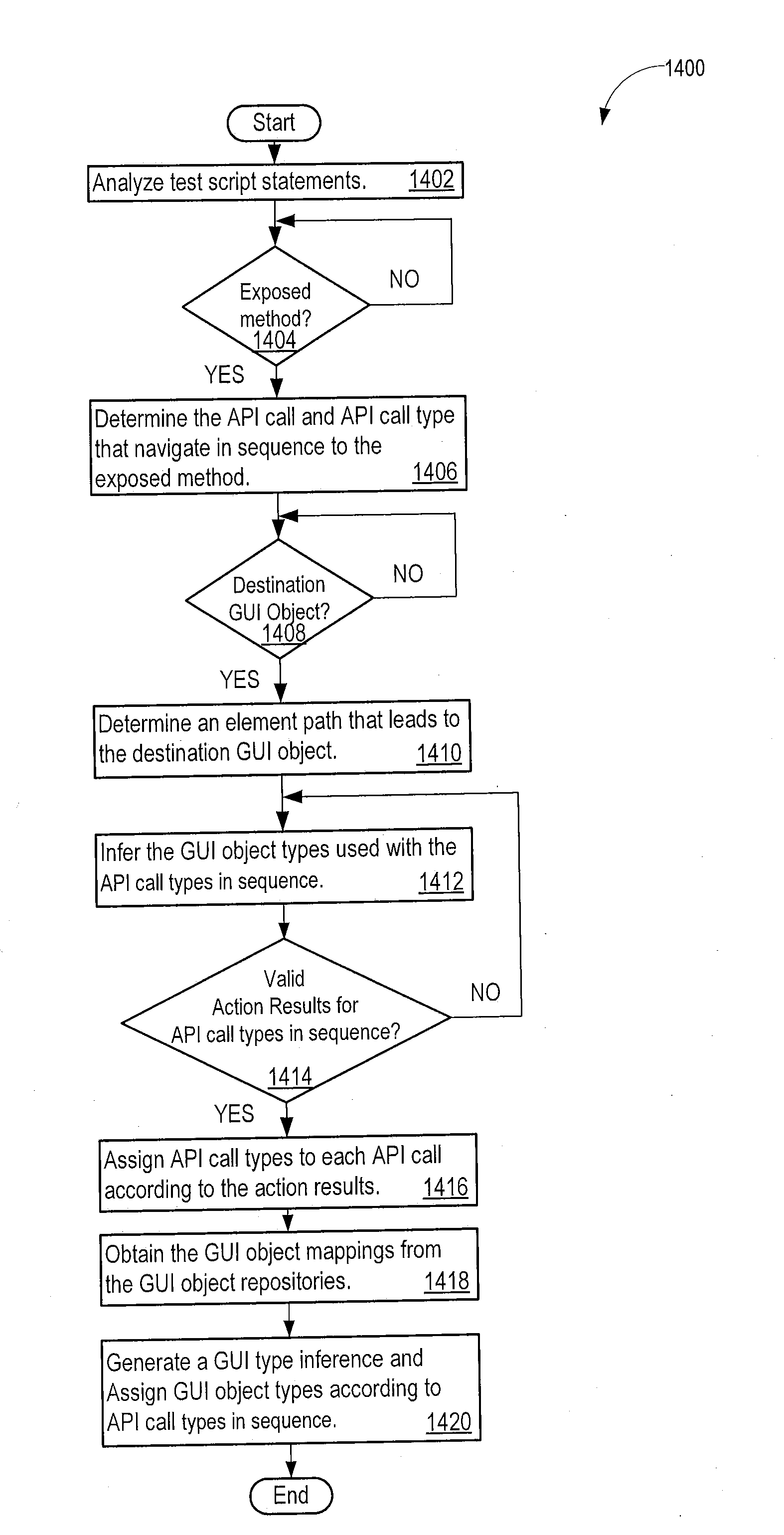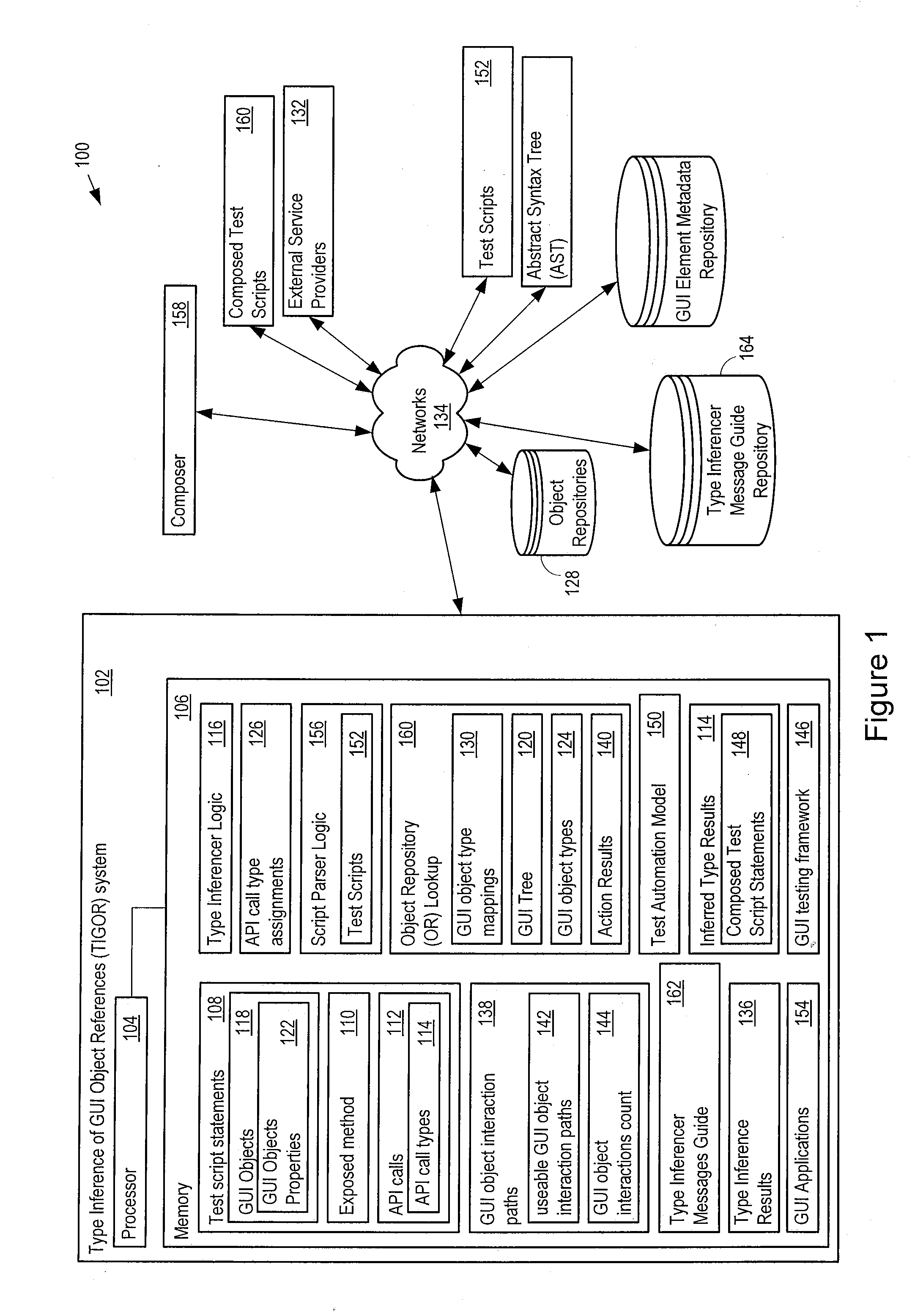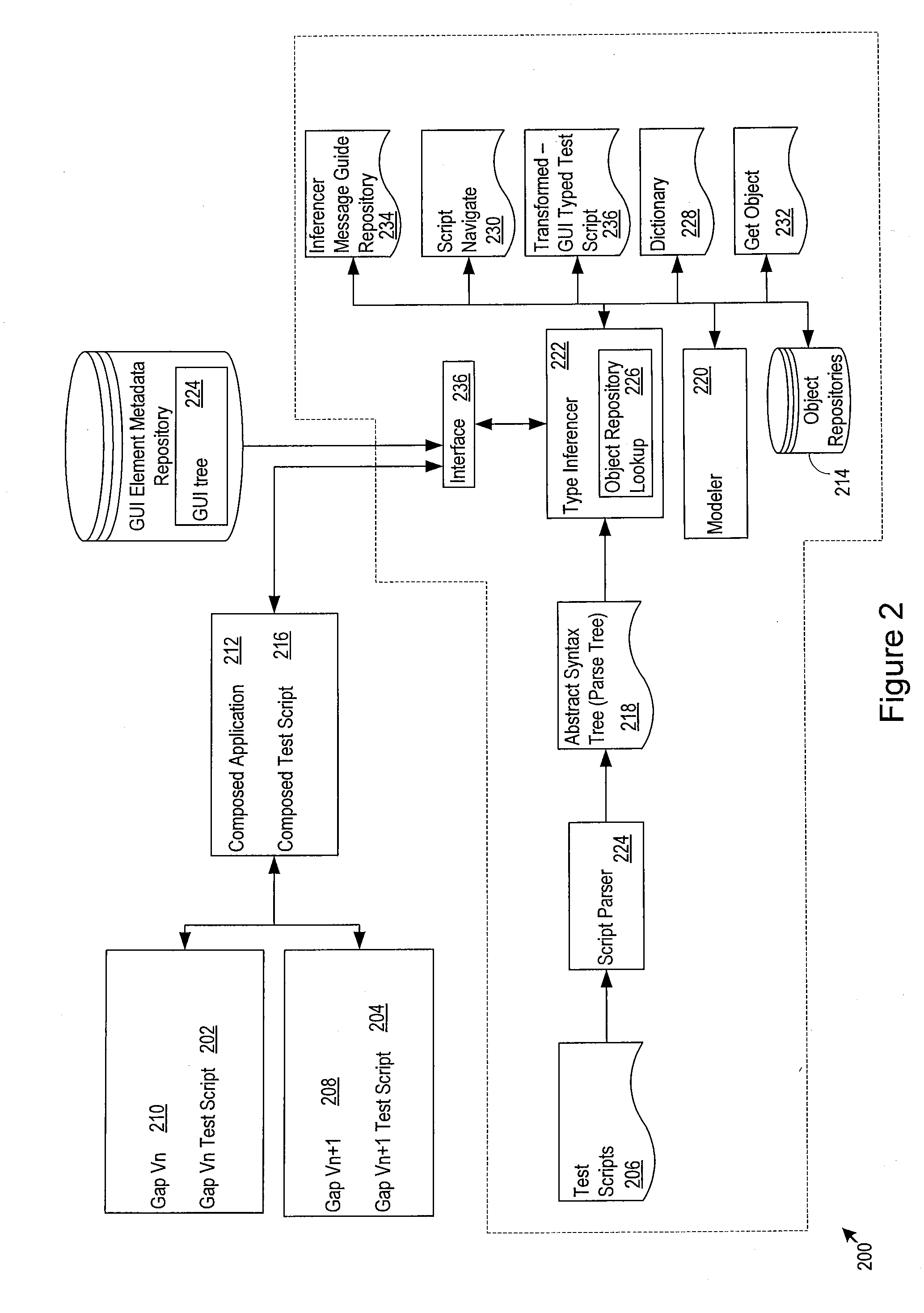Assisted compositional reasoning for test scripts
a compositional reasoning and script technology, applied in the field of analysis and generation of accurate gui object type inferences, can solve problems such as enormous potential, difficult to combine existing individual test scripts designed to test individual applications in order to test composed applications, and complex computer software applications
- Summary
- Abstract
- Description
- Claims
- Application Information
AI Technical Summary
Benefits of technology
Problems solved by technology
Method used
Image
Examples
Embodiment Construction
[0038]The Type Inference of GUI Object References (TIGOR) assists compositional reasoning about test scripts by inferring the data types of GUI objects on which a composed test script performs actions.
[0039]FIG. 1 illustrates an example TIGOR system architecture 100. The TIGOR system architecture 100 includes a system 102 that includes a processor 104 and a memory 106 coupled to the processor 104. The memory 106 includes a test script statement 108 that includes an exposed method 110 expressed in the test script statement 108, and Application Programming Interface (API) calls 112, characterized by API call types 114, that navigate to the exposed method 110 and lead in sequence in the test script statement 108 to the exposed method 110. The type inferencer logic 116, stored in the memory 106, when executed by the processor 104, causes the processor 104 to determine a destination GUI object 118 that exposes the exposed method 110 and finds an element path between sequential GUI object...
PUM
 Login to View More
Login to View More Abstract
Description
Claims
Application Information
 Login to View More
Login to View More - R&D
- Intellectual Property
- Life Sciences
- Materials
- Tech Scout
- Unparalleled Data Quality
- Higher Quality Content
- 60% Fewer Hallucinations
Browse by: Latest US Patents, China's latest patents, Technical Efficacy Thesaurus, Application Domain, Technology Topic, Popular Technical Reports.
© 2025 PatSnap. All rights reserved.Legal|Privacy policy|Modern Slavery Act Transparency Statement|Sitemap|About US| Contact US: help@patsnap.com



